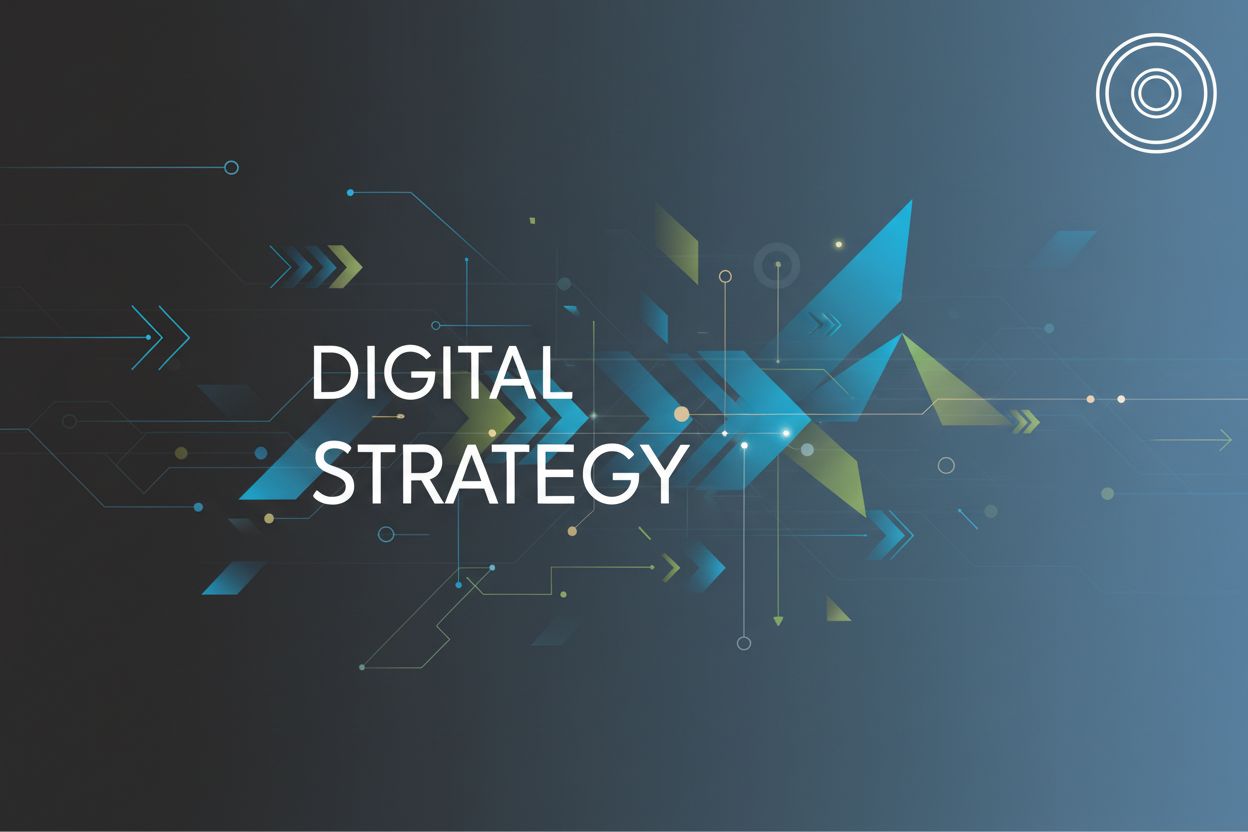Exploring the 5 A's Framework in Digital Marketing
TL;DR
Introduction to the 5 A's Framework
Marketing used to be so linear, right? Now, it's like a maze. That's where the 5 A's framework comes in, and honestly, it's pretty useful.
- It evolved from the classic marketing funnel, which was a more rigid, step-by-step approach where customers moved predictably from awareness to purchase. The 5 A's, however, acknowledges a more fluid and non-linear customer journey, reflecting today's complex digital landscape. (Marketing Funnels Are Dead: Here's What Replaced Them)
- It walks you through Aware, Appeal, Ask, Act, and Advocate, which mirrors today's customer. (The 5As Customer Framework | Don't Think, Check!®)
- It really helps understand the connected customer journey, because, let's face it, things are complicated now. (Why Automation in Customer Service Falls Short Without People)
This framework matters because it helps you connect with customers at every stage of their journey, not just when they're ready to buy. It’s about building relationships and fostering loyalty in a world where attention is scarce and choices are abundant.
Deep Dive into Each of the 5 A's
Okay, so, we've laid the groundwork. Now let's actually use this 5 A's thing, yeah? Each "A" is a step, and honestly? Some are harder than others.
First up is Awareness. Obvious, right? But it's not just about existing, it's about being seen. Like, if a tree falls in the woods, does it make a sound? If your brand exists but nobody knows, does it even matter?
- Strategies for visibility are key. Content marketing is huge, but it's gotta be good content. Think blog posts that actually help people, not just sales pitches.
- seo matters, big time. You can have the best product in the world, but if you're buried on page 10 of google, forget about it. And don't sleep on social media. It's not just for cat videos (though, those are important too YouTube).
- Measuring awareness is tricky, but doable. Reach (how many people could see your stuff) and impressions (how many actually saw it) are good starting points.
Like, a local bakery might run targeted facebook ads to people within a 5-mile radius, showing off their delicious pastries. That's awareness in action. Or a healthcare company could create a series of informative blog posts about common health issues, boosting their seo and showing they're not just about profits.
Okay, so people know you exist. Now they gotta like you. That's Appeal.
- Brand positioning is crucial. What makes you different? Why should someone choose you over the competition? It's not just about features, it's about feelings.
- Storytelling connects with people. Nobody cares about your product specs. They care about how your product makes their life better.
- Visuals matter. Your logo, your website, your social media – it all needs to scream "you" and resonate with your audience.
Let's say a new financial tech startup wants to appeal to younger investors. They might use bright, modern visuals, speak in a casual, jargon-free tone, and tell stories about how their app helps people achieve their dreams. It's not just about numbers; it's about empowerment.
So, you've got their attention and their interest. What's next? Getting them to actually, y'know, engage. That's Ask. This is where you prompt them to take a specific action, moving them from passive interest to active consideration.
- Clear calls to action (ctas) are essential. Don't be shy. Tell people exactly what you want them to do: "Download our guide," "Sign up for a free trial," "Request a demo."
- Lead magnets work wonders. Offer something valuable in exchange for their contact information. This could be an ebook, a checklist, a webinar, or exclusive content.
- Personalization makes a difference. The more you can tailor your ask to their perceived needs or interests, the more likely they are to respond.
For example, a travel agency might offer a free downloadable itinerary for a popular destination on their website. This "ask" is a clear step towards planning a trip, directly engaging someone who has shown interest in travel.
Now, they're interested, they've taken a small step, and you've asked. The next logical step is for them to actually do the thing you want them to do. This is Act. This is the conversion stage, where they become a customer.
- Streamline the purchase process. Make it as easy and frictionless as possible. Reduce the number of steps, simplify forms, and offer multiple payment options.
- Build trust and reduce risk. Use testimonials, reviews, guarantees, and clear return policies to reassure potential customers.
- Offer incentives at the right time. Discounts, limited-time offers, or bundled deals can nudge someone over the finish line.
A good example here is an e-commerce store that uses a simple, one-page checkout process, displays customer reviews prominently on product pages, and offers a small discount for first-time buyers. This makes the "act" of purchasing feel safe and easy.
Finally, you've got a customer. But the journey doesn't end there. The ultimate goal is to turn them into a loyal fan who will spread the word. This is Advocate.
- Exceptional customer service is non-negotiable. Happy customers are more likely to become advocates. Go above and beyond to resolve issues and create positive experiences.
- Loyalty programs and rewards encourage repeat business and advocacy. Make customers feel valued for their continued support.
- Encourage reviews and testimonials. Make it easy for satisfied customers to share their positive experiences. Actively ask for feedback and feature positive comments.
- Create opportunities for community building. Forums, social media groups, or exclusive events can foster a sense of belonging and encourage customers to connect with each other and your brand.
Think of a software company that not only provides excellent support but also actively solicits user feedback, implements popular suggestions, and then publicly thanks the users who suggested them. This makes customers feel heard and invested, turning them into vocal supporters.
Implementing the 5 A's Framework in Your Digital Marketing Strategy
Okay, so you're ready to put the 5 A's to work? Cool, but remember, it's not just about knowing the steps, it's about how you connect them to your actual marketing. Think of it as building a roadmap, but one that changes as you drive.
- First, map your customer journey. I mean really map it. Where do people first hear about you? What makes them stick around? What makes them buy? This is how you figure out the best touchpoints.
- Next, tailor your content. Don't just blast the same message everywhere. What someone needs at the "Aware" stage is totally different from what they need when they're ready to "Act." Visuals, tone, call to action, everything needs to be customized.
- And of course, track everything. If you're not measuring, you're just guessing. Use analytics to see what's working and what's flopping.
Like, a SaaS company might use a free tool or webinar to generate awareness, then personalized email sequences to nurture appeal, and finally, targeted demos to drive action.
Case Studies: Successful Implementation of the 5 A's
Ever wonder if those marketing frameworks actually work? Well, let's look at some real-world examples, yeah?
Picture a B2B software company. They weren't really struggling, but they wanted more leads. They mapped their customer journey to the 5 a's and realized their content was too generic, like, aimed at everyone but resonating with no one. So, they changed it.
They started making super-specific blog posts and webinars targeting each stage (Aware, Appeal, Ask). For example, instead of "what is cloud computing?" they did "5 ways cloud computing can save your business money this quarter." The results? Lead generation went up by like, 40% in six months. Not bad, huh?
The lesson? Don't be afraid to niche down. It feels counterintuitive, but targeting a smaller audience with laser-focused content is way more effective than trying to be everything to everyone.
Then there's a consumer goods brand—think, like, a fancy coffee company. They were good at getting sales, but not so much at keeping customers around. They focused on Appeal and Act.
They revamped their website with more engaging product descriptions and high-quality imagery, making their coffee look and sound irresistible. They also simplified their checkout process, reducing cart abandonment by offering guest checkout and multiple payment options.
This made it easier for people to not only be drawn to their products but also to actually purchase them. Repeat purchases increased by 15% in the first quarter after the changes.
And let's not forget a local restaurant that wanted to build a stronger community around their brand. They focused on Advocate.
They launched a customer loyalty program with exclusive perks and early access to new menu items, but the real kicker was the user-generated content campaign. They encouraged customers to share photos of their meals using a specific hashtag, and then they featured the best ones on their social media.
This created a sense of community and made customers feel valued, and repeat purchases increased by 25%. People love feeling like they're part of something, y'know?
So, feeling inspired?
Conclusion: The Future of Digital Marketing with the 5 A's
So, you made it to the end! Now what? The 5 A's ain't just some academic thing to, like, think about.
- It's about really understanding your customer's head.
- Adapt like crazy! Customers change, tech changes, everything changes.
- Go implement this! Seriously, map your journey and make some content, already.
Digital marketing's future? It's gonna be personal. Get on it!




